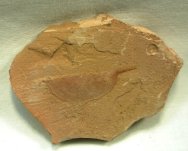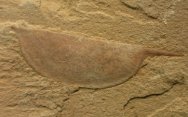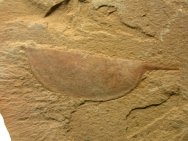| 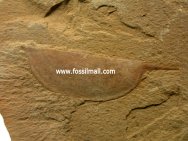 Description:
This unusual arthropod is known as Isoxys paradoxus. The species
is known mostly from the distinctively–pointed bivalved carapace.
The diversity of soft-tissue fossils is astonishing: algae, medusiforms,
sponges, priapulids, annelid-like worms, echinoderms, arthropods
(including trilobites), hemichordates, chordates, and the first
agnathan fish make up just a small fraction of the total. Numerous
problematic forms are known as well, some of which may have represented
failed attempts at diversity that did not persist to the present
day. Description:
This unusual arthropod is known as Isoxys paradoxus. The species
is known mostly from the distinctively–pointed bivalved carapace.
The diversity of soft-tissue fossils is astonishing: algae, medusiforms,
sponges, priapulids, annelid-like worms, echinoderms, arthropods
(including trilobites), hemichordates, chordates, and the first
agnathan fish make up just a small fraction of the total. Numerous
problematic forms are known as well, some of which may have represented
failed attempts at diversity that did not persist to the present
day.
The
genus is only rarely preserved with any soft parts evident, and
only in the species Isoxys auritus. Based upon the few known examples,
it had a long segmented body, 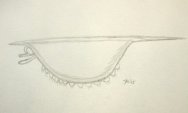 forwardly-projecting
stalked eyes, and short antennae. The swimming appendages and most
other soft parts only protruded slightly from their protective shell.
The other two species: I. paradoxus and I. curvirostratus have an
elongated posterior projection. This one is Isoxys paradoxus. This
taxon is known only from the Chengjiang Biota, but other members
of the genus are found in deposits in Europe, Australia, and North
America. forwardly-projecting
stalked eyes, and short antennae. The swimming appendages and most
other soft parts only protruded slightly from their protective shell.
The other two species: I. paradoxus and I. curvirostratus have an
elongated posterior projection. This one is Isoxys paradoxus. This
taxon is known only from the Chengjiang Biota, but other members
of the genus are found in deposits in Europe, Australia, and North
America.
Also
see: Chengjiang
Biota List Chengjiang
Fossils
|


